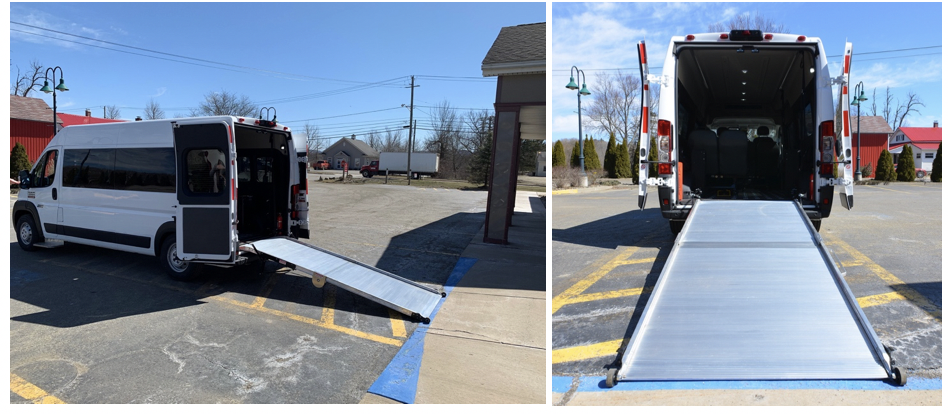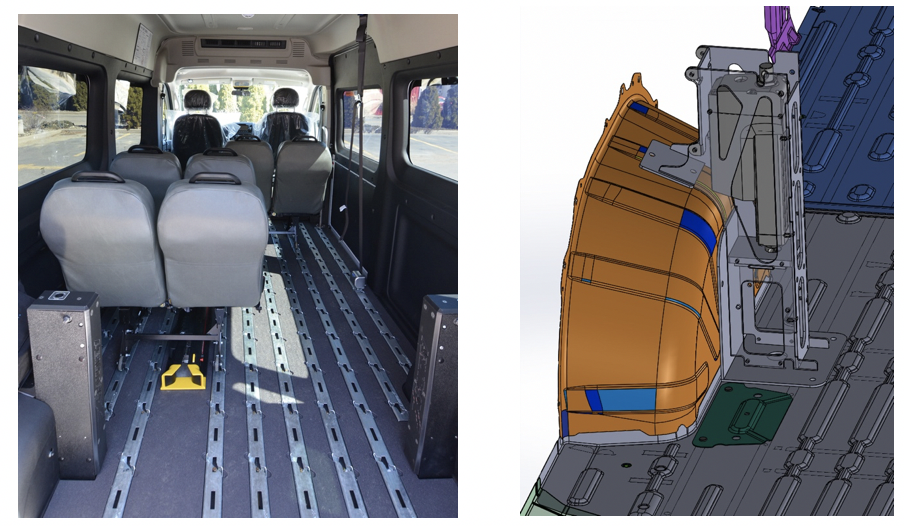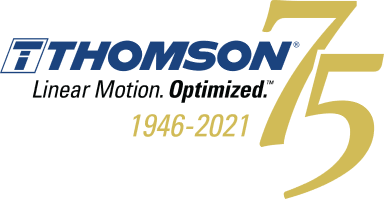Maximising mobility for handicapped vehicle passengers requires more accessibility features than conventional automotive manufacturers typically provide. Although some standard vehicles offer basic wheelchair lifts and options for higher-roofed models, improving on these and augmenting them with ramps, adjustable seating, hand controls and other capabilities requires customisation — or what is known in the industry as “upfitting.”
Fenton Mobility, one of the largest upfitters in the United States, holds numerous patents for personal mobility innovation, including a low-angle wheelchair ramp that enables safe, easy van access via the rear entrance. Smooth, reliable operation of this ramp is critical to the comfort and safety of passengers, and Fenton achieves this cost effectively thanks to smart, heavy duty electromechanical actuators.
Addressing market challenges
Demand for custom vehicles among urban paratransit services, nursing homes and other cargo van users is growing steadily. Manually raising the roofs and doors on Ford Transit vans to accommodate wheelchair access had become a significant part of Fenton Mobility’s business but was threatened in 2015 by the emergence of new European van designs that came right from the factory with raised roofs and doors.
“We actually saw the change coming around 2013 and went to work on ways to make it even easier for ambulatory and wheelchair clients to access these Euro-style vans which are also available in the US,” said Scott Fenton, President of Fenton Mobility Products. “The result is our patented AbiliTraxÔ platform, a universal flooring platform that bolts into European-styled Dodge Ram ProMaster, Ford Transit or Mercedes Sprinter vans that are available in the U.S. The platform gives users more flexibility in locating seating and access ramps.”
Reducing angle of access
Installing the ramp in the rear of the van provided more convenient access in confined spaces such as garages and other tight parking areas. However, the fact that the European-style van still required a relatively steep angle of access presented a unique opportunity for Fenton designers. If they could enable a lower angle of access to the back of the van, wheelchairs could roll in more easily and safely.

The AbiliTrax platform gives users more flexibility in locating seating and access ramps. The low-angle wheelchair ramp enables safe, easy van access via the rear entrance.
Accomplishing this required mounting actuators inside the back of the van to apply thousands of pounds of downward compression force to the vehicle’s standard suspension. Fenton designers first considered using pneumatic actuators for this application but soon rejected the idea out of concern that condensation in cold weather could jeopardize reliability.
They then concluded that heavy duty electromechanical actuators would be the most effective solution. To meet Fenton specifications, these actuators would need to be compact while featuring higher force ratings than comparable hydraulic systems. With strength to apply at least 2200 lbs. of compression force to the van’s rear suspension, the actuators would enable the vehicle to squat down, lowering the ramp by six inches.
A smart choice
After testing different electromechanical actuators, Fenton selected Thomson Electrak® HD linear actuators due to their high load handling capability and onboard electronics, which enable low-power switching, and environmental resistance.
“We can connect the high voltage required to drive the actuator directly to the battery and use low-voltage switching to control it,” said Fenton. “Any time you can control high-voltage power with lower-voltage signals, it will be much easier, much safer, and less expensive because of the limited and reduced-size wiring needed to accomplish this. And it enables us to offer something that our competitors cannot.”

Fenton selected Thomson Electrak HD linear actuators due to their high load handling capability, environmental resistance and onboard electronics, which provide digital position feedback, advance diagnostics and CAN bus networking.
Low-level switching allows the actuators to be extended or retracted with a simple control signal, which is much safer than switching the full current required by the motor. Built-in end-of-stroke indicators inform users when the actuator is fully extended or retracted, and the actuator electronics also facilitate cycle count data on the Abilitrax system.
Fenton liked that the actuator’s electronics could be overridden manually during a power loss. “If we ever had a wiring issue or other problem that disabled the actuators, they are easily extended or retracted manually,” he said. “So, if the van experienced an electronic failure or loss of power while in squat position, the user could bring it right back to factory ride height manually.”
Fenton also liked that, compared to competitive models, Electrak HD actuators run at their rated power or, oftentimes, much lower, perform consistently from unit to unit, and feature simpler cabling. “You are only running one cable to the battery, and all switching is done in a water-tight enclosure,” he said.

Thomson Electrak HD linear actuators allow the AbiliTrax platform to lower the van’s rear, enabling the vehicle to squat down and lower the ramp by six inches.
Using additional features
Demanding applications such as the AbiliTrax system are ideal for Electrak HD actuators, which are more powerful (loads up to 3500 lbs [16 kN]) and feature longer strokes than comparable models. Fenton has found that the Electrak HD’s onboard controls not only make them suitable for low level power switching but also equip them to provide digital position feedback, advanced diagnostics and CAN bus networking. These capabilities are achieved through an integrated printed circuit board that replaces standalone controls. Electrak HD also meets the most extreme OEM component environmental acceptance tests, including IP69K.
“While this specific project did not utilise all the available Thomson features, there is much more that can be done with the onboard circuit board,” said Fenton. “Everything is built right into the actuator. You can customise the functionality you need, and it is easy to work with. We have future projects to utilise other features, including CAN bus networking and synchronisation.”
Ramping up
The lower-angled ramp is just one accessory that the AbiliTrax platform contributes to Fenton Mobility’s continued success in the general purpose and luxury shuttle van markets. With the flexibility designed into the platform and the untapped potential of the intelligence embedded in Thomson Electrak HD actuators, Fenton is well poised to drive van passenger comfort to new heights.



